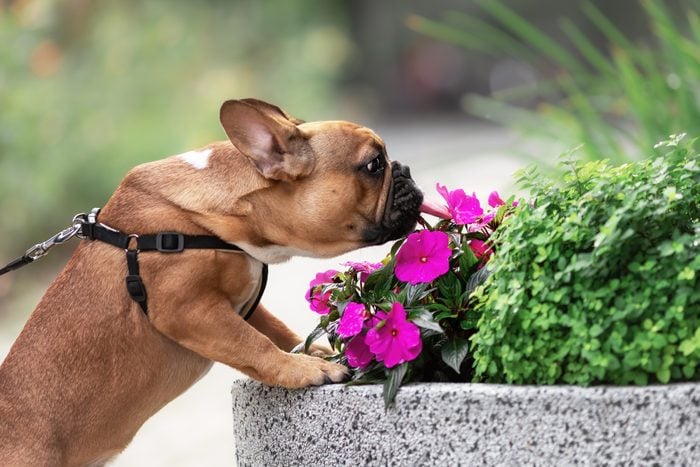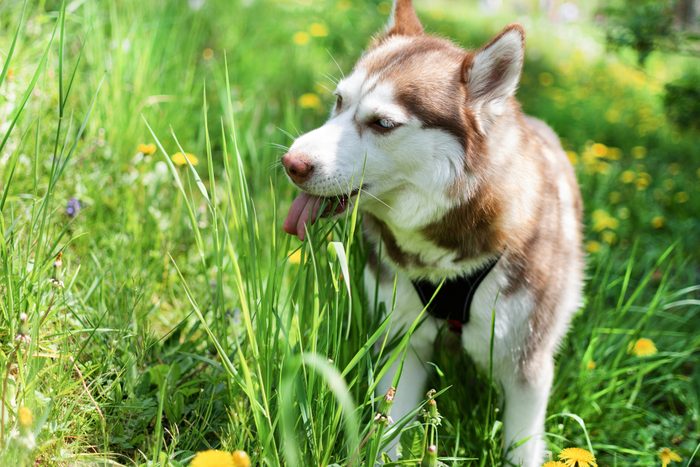
Edible Plants
These can provide a tasty treat for your dogs and stimulate their sense of taste and smell.
Opt for dog-safe plants like rosemary, thyme and strawberries. These offer a fun snack and create a rich tapestry of scents.
Both my dogs love dandelions and cleavers (aka sticky willy, sticky bob and robin-run-the-hedge, among other things!). While these are usually considered weeds, they’re safe for dogs. And dandelions are great for pollinators, so we leave a wild area along our property line where these plants can grow unhindered.
I grow lavender, chamomile, echinacea and calendula in patches throughout the garden. You can also grow these plants in containers. They provide stimulating or relaxing scents, and they’re safe for your dog to eat if they fancy a quick nibble.
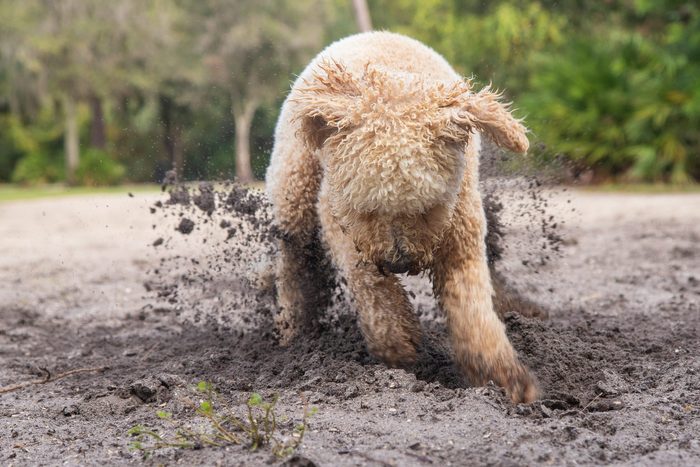
Sand Pit
This fun addition offers your dog a new texture and a great digging spot. It encourages physical activity to indulge their natural digging instincts without damaging your garden.
Bury a few of your dog’s toys for some extra fun and challenges. If you go for a covered sand pit or a kids’ sandbox with a cabana, your dog can stay shady or keep on digging even in the rain!
My older dog loves his sandbox. It brightens his day, lets him work out some pent-up energy and fulfills his natural digging instincts as a terrier. Plus, it’s good fun and seems to relieve his anxiety when he’s having a bad day. Here are a few ideas for gardening with your dog.
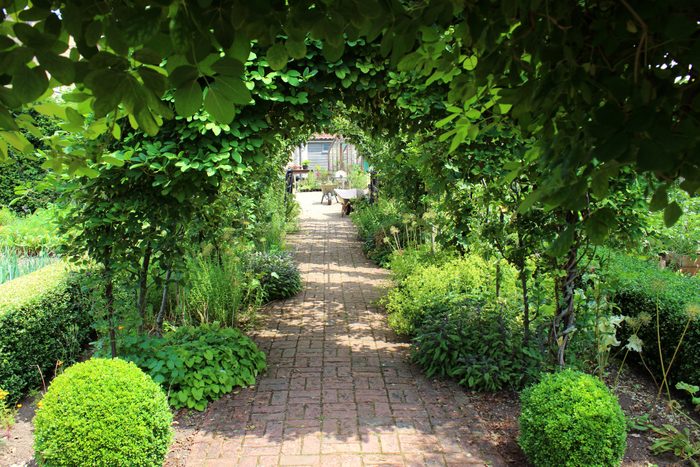
Living Tunnel
A living tunnel, created by training plants like vines or shrubs over a sturdy frame, offers a visual and tactile experience for your dog. It can provide a cool, shaded pathway in summer, a place to explore, and even a fun hide-and-seek spot!
I also love the idea of planting young willow saplings and training them to grow entwined, creating a tunnel. Willow grows rapidly. It’s safe for dogs to be around and easy to train.
Plus, this makes a beautiful feature for your outdoor space. With a big enough tunnel, you can add a bench inside as a lovely shady spot for humans to hide away during the summer.
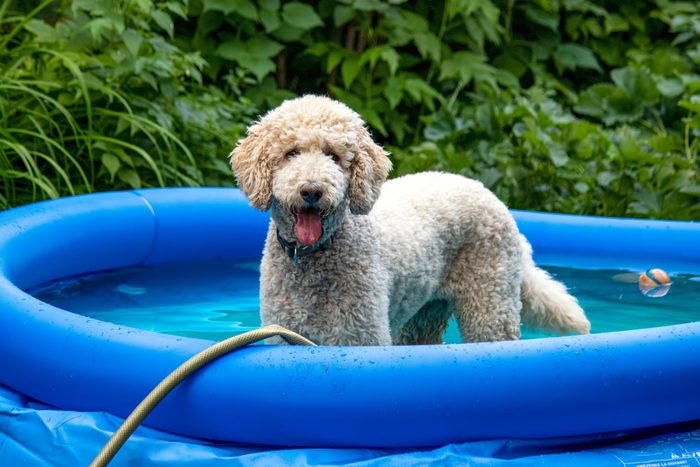
Water Features
A shallow pond or a sprinkler can provide a refreshing sensory experience for your dogs, especially in the warmer months. They promote interaction with water, offering a cooling play area and stimulating their senses of touch, sight and sound.
My pups have a kids’ sprinkle pool that sends up light jets of water for them to play in. In warmer weather, they have an absolute blast chasing their toys and each other in and out of the water streams.
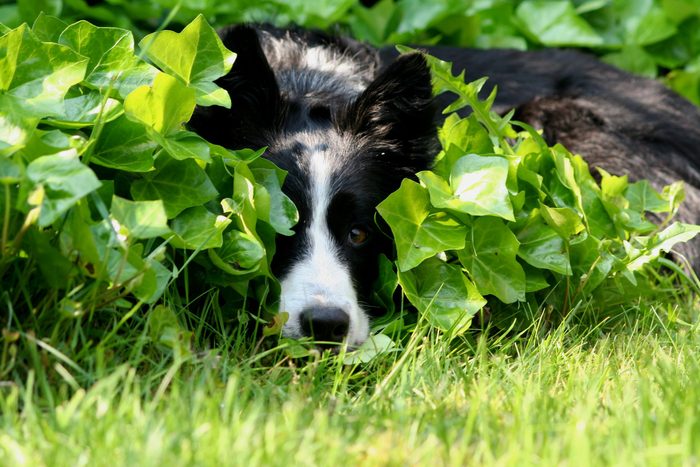
Varied Surfaces
Incorporating different surfaces like grass, sand, paving stones, wood or mulch can stimulate your dog’s sense of touch and keep their paws interested. This variety can mimic the diverse textures they would encounter in nature, adding to the enrichment of your sensory garden.
In summer, my older dog enjoys cooling his belly by laying on the patio, while my younger dog likes the grass beneath the big silver birches. Neither enjoys walking on gravel or pebbles, so we don’t include them in our landscape.
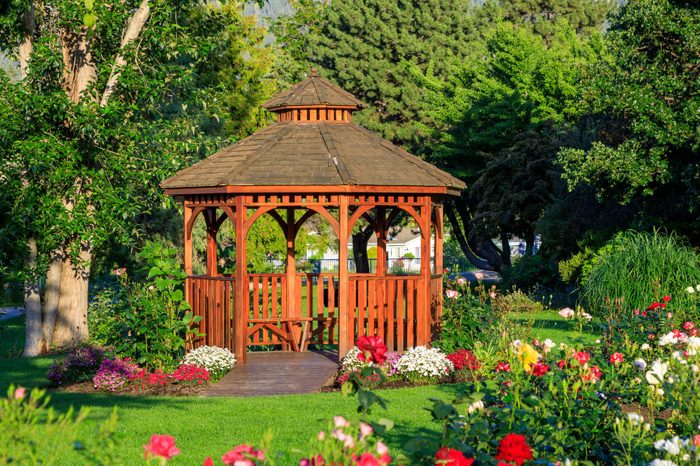
Shady Spots
Anything that casts shade provides a cool retreat on hot, sunny days. A simple pergola or a large, leafy plant can create the perfect shadowy spot for your dogs to rest and watch the world go by.
Our shady zones included a patio with a big garden umbrella over a dining and seating area, where the humans and dogs can hang out together. I keep a selection of outdoor beds for the dogs and some super-comfy outdoor floor cushions for the humans, alongside the regular outdoor seating.

